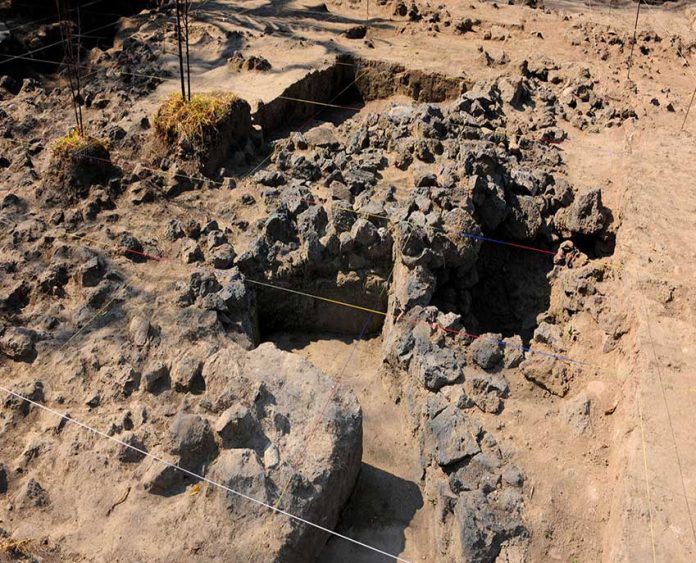Archaeologists have uncovered the foundations of an early 15th-century pre-Hispanic structure in the Mexico City borough of Coyoacán.
National Institute of Anthropology and History (INAH) archaeologist Juan Cervantes explained that the tecpan or tecpan-calli, as the structure is known, was a building where political and administrative tasks were carried out or, in other words, a kind of government palace.
He added that the tecpan would also have been the home of the local leader of the pre-Hispanic locality known as Atenco Omac and his family.
Excavation of the land on which new headquarters of the Mexican Academy of Language are slated to be built revealed the structure.
It has at least five rooms that were used for different purposes and were linked by a series of corridors.
“The largest rooms must have been used for meetings of the leader and his advisors, where the affairs of the calpulli, or community, were discussed. The others, of medium or small dimensions, were for the storage and preparation of food . . .” Cervantes said.
“The excavation and detailed recording of this structure will enrich the information we have about the architecture of the indigenous nobility in the late Post-Classic period in the Valley of Mexico and allow us to test our hypothesis about the political and territorial structure in a provincial capital outside Tenochtitlán.”
Cervantes explained that tecpans were “very important in pre-Hispanic times and that in practically every settlement in the era of the Mexica empire, there was a tecpan.”
This latest discovery, located in the Coyoacán neighborhood of Santa Catarina, is the fifth tecpan that has been excavated in the Valley of Mexico outside of those located in the central area of the modern-day capital, which stands on land where the ancient city of Tenochtitlán stood previously.
The archaeologist said Coyoacán was part of territory controlled by the Tepanec people until it was incorporated into the Mexica, or Aztec, empire in 1428.
The other four excavated tecpans were found in the pre-Hispanic area known as Acolhuacan, which today is the municipality of Texcoco, México state.
Cervantes said the discovery is “very important because not only can it provide us with information about something as basic as building systems . . . but it can also provide us with information about the kind of activities that were carried out here and about the political organization.”
He added that construction of the tecpan had been dated to the early 1400s, explaining that the hypothesis was primarily based on the type of ceramic artifacts found at the site.
The structure itself was built out of both volcanic and river rock joined together with mud. The archaeologists have found evidence that the tecpan was extended in later construction phases.
“It should be noted that the work done so far has only allowed us to excavate and record a section of the architecture from the most recent construction stage of the building. From the older period, only a stucco floor, that is perhaps from a room, and a section of wall . . . have been recorded,” Cervantes said.
The Atenco Omac tecpan appears on the so-called Uppsala map, which is stored in the library of the university in the Swedish city of the same name.
On that map — which was made in around 1550 and is considered one of the most important maps from early Spanish colonial days — a frontal view of the structure appears along with a jade frieze on its roof, which indicated that the tecpan located in Coyoacán was one of the most important of its time.
Cervantes said that its inclusion on the map is a sign that the Atenco Omac tecpan continued to be used for decades after the Spanish conquest in 1521.
Mexico News Daily
